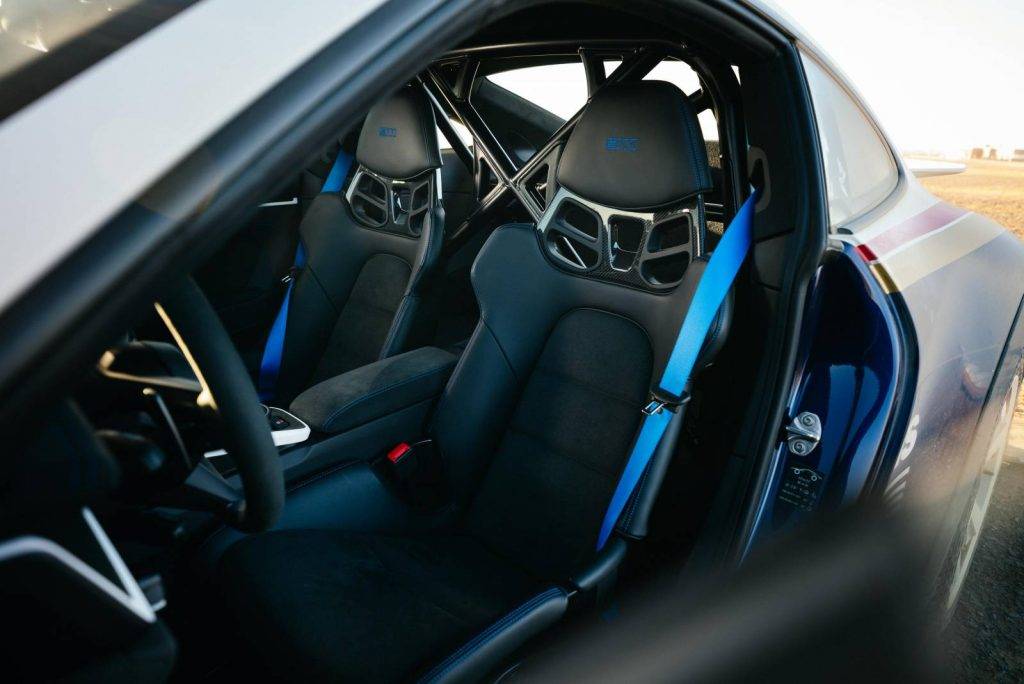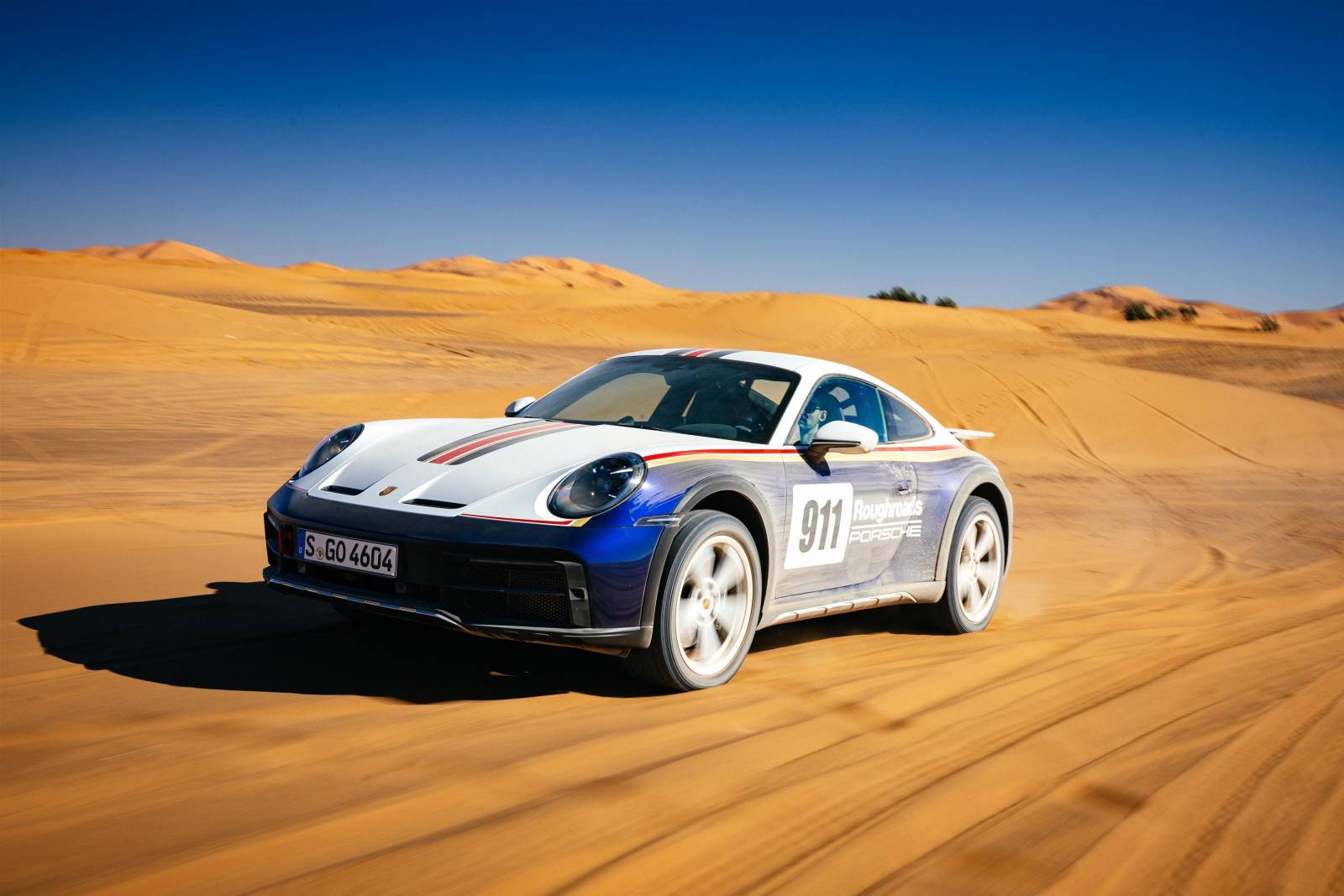Rallying around: The Porsche 911 Dakar
Variety is the spice of life. I like this adage. For those who are into gastro-culinary arts, this means an all-you-can-eat buffet with enough mouth-watering morsels to satiate even the most ardent foodie. Fashionistas probably think of slinking through the streets of Milan or Rome, purchasing the latest and greatest threads money can buy.
In the automotive context, it conjures up images of a storage hangar filled with unique cars — a sea of exotic metal as far the eye can see — some invaluable because of the sentimental value they command.
Every now and then, we get to experience a special car — one that gets our petrol veins coursing with the highest octane.
I have recently returned from Morocco, where I drove one such car — the Porsche 911 Dakar. Wait, a Porsche 911 whaaaat? Let me elucidate. You see, back in 1984, Porsche campaigned a specially developed 911 to compete in the Paris-Dakar Rally, where it clinched overall victory and birthed the all-wheel-drive system in the 911.
It was essentially a 911 Carrera 3.2 model with raised ride height, a 4×4 drivetrain and knobbly off-road tyres, perfect for tackling sand dunes and rock-strewn gravel roads.
Code named 953, three of these bespoke-built 911s lined up at the 1984 Paris-Dakar Rally, with one manned by Belgian racing legend Jacky Ickx, who was instrumental in convincing Porsche to proceed with this crazy motorsport project. Ickx, together with co-pilot Claude Brasseur, had won the previous year’s race in a Mercedes-Benz 280 GE (Geländewagen).
The other two cars were those of project manager Roland Kussmaul and co-driver Erich Lerner, while the third and race-winning car, bearing the now famed #176, was steered by René Metge and Dominique Lemoyne, to critical acclaim.
Here was a sports car that took the fight to the purpose-built rally racing cars and beat them outright. This paved the way for the Porsche 959, which participated in the 1986 edition of that epic race. Porsche was clearly onto something here, but there was a lengthy hiatus thereafter and nothing to follow up on that brilliant trajectory — until now, that is.
Welcome to the 992 4 GTS-based 911 Dakar, of which only 2 500 units will be built. It pays homage to the aforementioned ’84 Paris-Dakar Rally-winning car and it’s been a long time coming.
Yes, back in 2012, Porsche built a 991-based off-road concept 911, dubbed Vision Safari, as a case study, but seemingly nothing ever came of it. Perhaps management thought it a derivative too far to mess with the winning 911 sports car recipe — the firm’s holy grail, if you will — and put that idea on ice.

However, as buyers look beyond buying sports cars for their searing performance and dizzying top speeds, perhaps there is a case for an off-road 911 that can traverse more than conventional tarmac.
To prove this, we explored Morocco’s vast expanses of desert and sand dunes, to welcome the latest instalment to the 911 fold.
This jacked-up 911 is the company’s modern interpretation of the 911 Vision Safari, based on the current 911 4 GTS, but most of its underpinnings share very little with the street-based models. This includes a 50mm higher ride height, which can be lifted 30mm further in Off-Road mode, higher front and rear approach, and departure angles replete with chrome scuff plates.
There is adaptive air suspension at each corner, while the tyres are Pirelli Scorpion off-road items measuring 245/45/19 at the front and 295/45/20 at the rear and designed specifically for the 911 Dakar.
There’s also a CFRP (carbon fibre-reinforced plastic) rear wing that weighs a scant 3.2kg and pays homage to the ’84 racing car. It has a lithium battery and carbon-fibre bonnet, all in the interests of weight saving. This brings the 911 Dakar’s kerb weight to 1 605 kg, only 10kg more than the 911 4 GTS on which it is based.
In addition, you can option the Rallye Design Package that echoes the winning rally car, replete with “Rothmans” livery, dubbed “Roughroads” in this instance, due to the ban on cigarette advertising. It is a paint job from Porsche Exclusive Manufaktur, and not a wrap, which makes it even more special.
You can also tick the roof-rack option, which allows you to carry some cool amenities off the beaten track, such as foldable shovels, jerry cans or, my absolute favourite, pitch a tent atop the roof and camp somewhere in the bushveld. Very cool!
The cabin is a familiar sanctuary for those accustomed to the GT3, with the same bucket racing seats, roll cage and absence of rear seats. It is a lekker place to be with an Alcantara-wreathed steering wheel and leather touchpoints, with the series number plaque on the passenger drop-down console to add that touch of exclusivity you can brag to your mates about.
But, of course, this being a 911, you would expect sizzling performance and it delivers here. Nestling at the rear is the familiar 3.0-litre, bi-turbo boxer engine that puts out 353kW and 570Nm linked to an 8-speed PDK gearbox and all wheel drive.
Even with knobbly off-road boots, the 911 Dakar can sprint to 100km/h in 3.4 seconds (5.5s on sand), while the top speed has been limited to 240km/h, due to said tyres.
There are two new driving modes in addition to Wet, Normal and Sport — Rallye and Off-Road. In a 911, it still beggars belief, but there it is, and it works an absolute treat.
Thanks to that special suspension mechanism that lifts the ride height by a further 30mm on both rear axles for a total of 191mm, you can overland in places more suited to a Cayenne than a 911 at speeds up to 170km/h before the suspension resets to its normal ride height.
Rallye mode also opens a rally-start-type Launch Control, so you can bring out the René Metge in you.
The suspension has been dialled in properly, and while some ruts on gravel can upset the ride quality somewhat, and the desert vegetation, which is hard as a rock, needs to be avoided at all costs, as some media colleagues found out at the launch, the 911 Dakar’s suspension is quite incredible.
We scaled massive dunes that would have 4×4 enthusiasts panting while trying to negotiate them. At one point, I felt Porsche was truly nuts to be doing this, but it showcased the model’s abilities in a way not many of the lucky few owners will get to experience.

Even so, the 911 Dakar is a proper sports car and can be thoroughly enjoyed on the open road, thanks to specially designed off-road tyres devoid of typical road noise.
According to a Pirelli representative, what is interesting is that the tyres were developed about six months into the 911 Dakar project, which took only 13 months from start to completion, incredible considering a lot of the suspension components are bespoke to this model.
Having experienced the 911 Dakar, I doff my hat to the team that presented this ludicrous idea to the members of the board. The fact that they were allowed to go ahead with it says a lot about the Porsche brand.
At a cool price of R4.2 million, and with a very limited number of models coming to our shores, it will remain a rare sight, one that should be celebrated when spotted out in the wild.
I’ll have mine in the Rallye Design “Roughroads” livery, with a roofrack, thanks. One is allowed to dream, surely.
I am glad Porsche goes ahead with ridiculous projects like this one. The fact that orders far outstrip the 2 500 units to be built is a testament to the desirability of this model.
I get it now. Unequivocally so! And the car that won the 953 Paris-Dakar would approve of this latest 911 Dakar as its spiritual successor.





















Discussion about this post